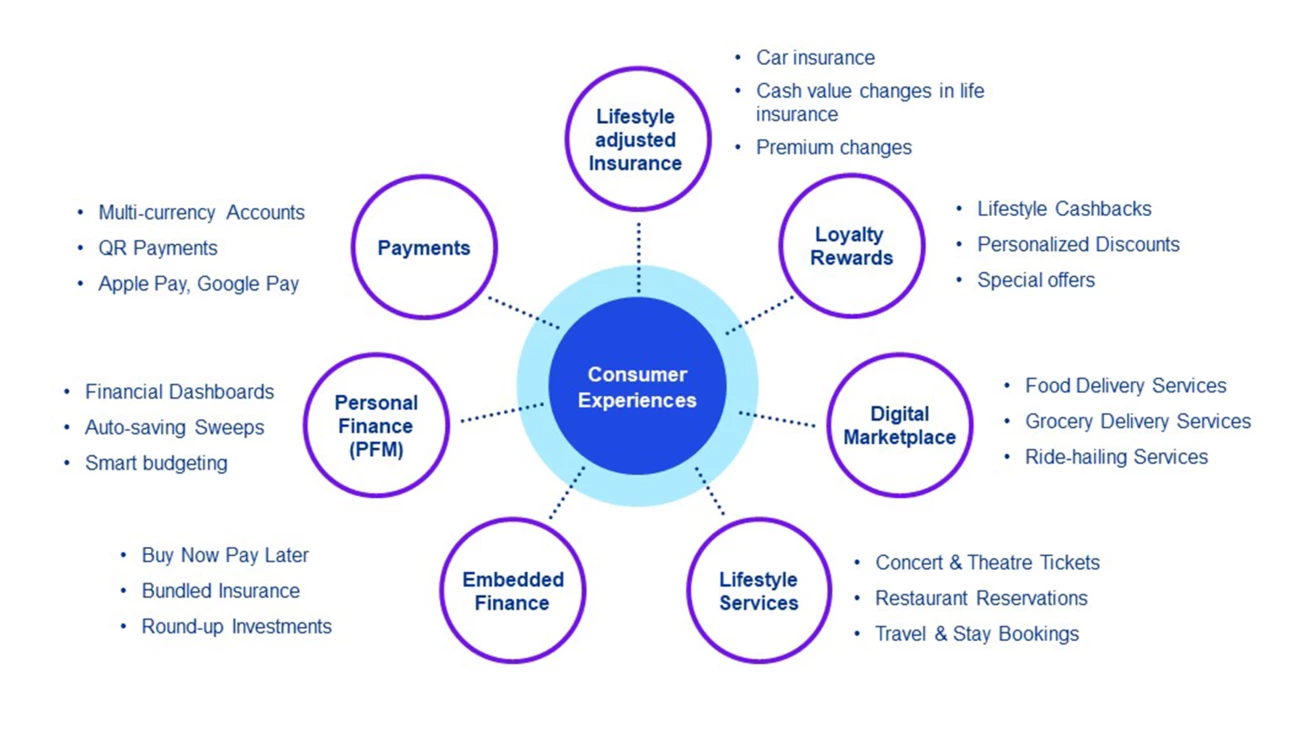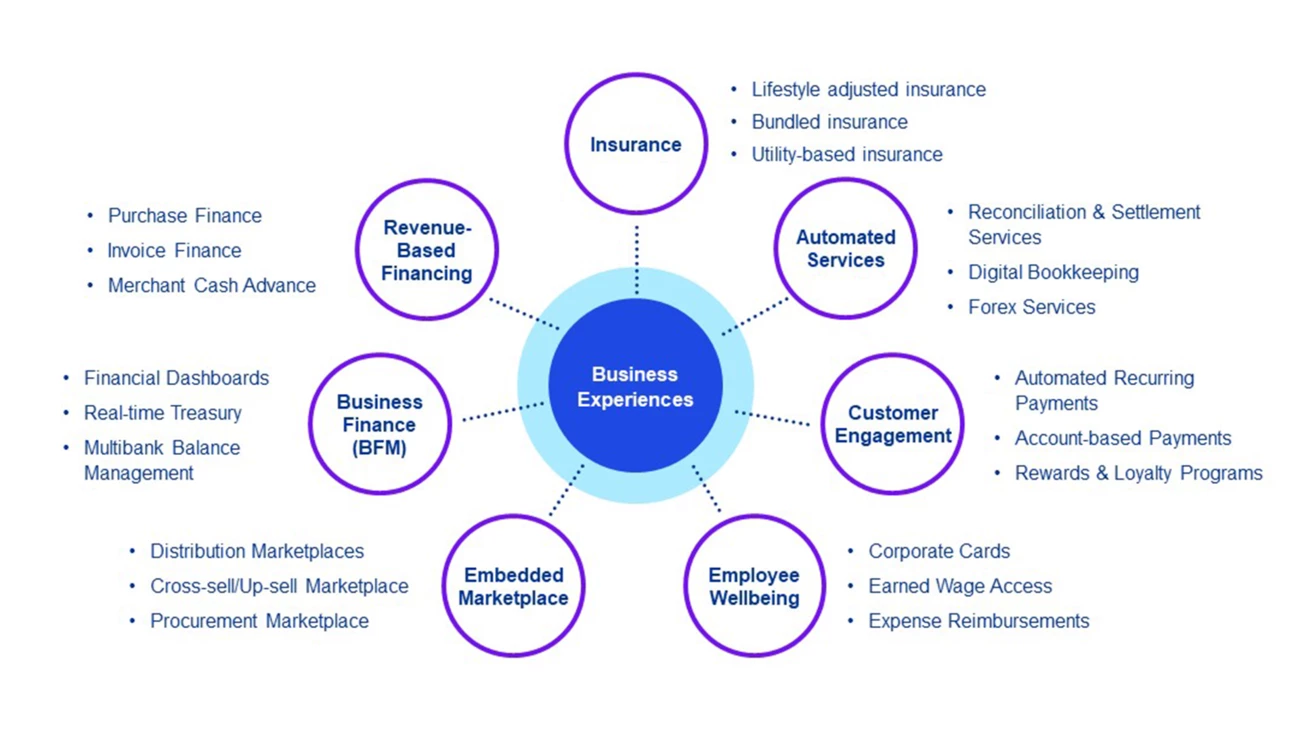The journey from traditional banking to open data
When trying to understand the transformation of the banking industry, it is common to divide the evolution into four phases, starting in an oligopolistic and enterprise-centric situation that over time evolves into a state of radical collaboration and customer-centricity.
Closed banking/Traditional banking offers a front-to-back business model, where the financial institution originates and distributes the product, e.g. sells current accounts and settles payments.
Open Banking, which went live in 2018, requires financial institutions to provide payment account information on customer request to third-party providers (TPPs), who can then use and act on this information, e.g. account aggregation and payment processing. Open Banking arose from PSD2 and is underpinned by a defined legal and regulatory framework.
Open Finance will likely require financial institutions to provide access to all consumer financial data on customer request to third-party providers, who can then use and act on this information (e.g. credit quality assessments or adjusted insurance premiums). Currently, there is no legal or regulatory framework for Open Finance in the EU, but the Commission is expected to present a regulatory framework in 2022/2023.
Open Economy is the digital connectivity that is an extension of Open Finance, which will integrate all consumer data on their request, provide this information to one or many third-party providers, who will then use or act on this information.
We see a clear direction towards a more integrated financial services ecosystem for customers, which will continue to disrupt traditional business models and challenge financial institutions.
What Open Finance potentially means for banks
For banks, Open Finance will most likely entail a similar situation as with Open Banking, but for even more financial products than bank accounts. Traditional banking products that Open Finance could disrupt are savings, investments, pensions, mortgages and insurance. This in turn means that banks should be prepared to invest in and maintain real-time connectivity to data through APIs, just as for PSD2 – but for a much larger scope. Banks could face margin pressure on highly profitable core products and increased competition from third-party providers in terms of developed customer experience, for example regarding interfaces, personalisation and insights.





